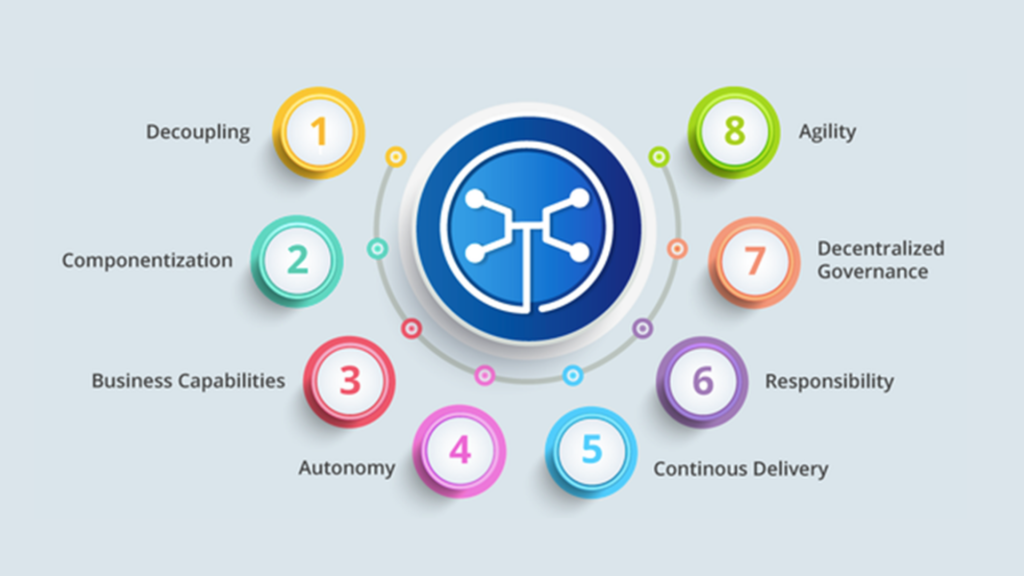
In microservice architectures, applications are built and deployed as simple, highly decoupled, focussed services. They connect to each other over lightweight language agnostic communication mechanisms, which often times means simple HTTP APIs and message queues. Services are built around business capabilities and independently changeable and deployable with only a bare minimum of centralized management. They are polyglot in terms of programming languages, frameworks, and data stores used. Lastly, microservices are resilient, which means they are immutable artifacts that are designed to fail and elastic in scale.
In short, microservice is a self accommodating process that runs a unique business capability. For an instance, when we visit any e-commerce website, all we notice is the products its offering. But how is this all-in-one store facility been brought up in accordance for customer convenience? How do these large number of products who are varying in nature from each other and owned by different suppliers, get compiled in a super store? Microservices.
These microservice are focused on facilitating the variety of features that the website has to offer to its end customers. Some of the key benefits are:
Modularity and Modifications – With businesses expanding modifications comes as a part of life for a software development process. Microservices creates a loosely coupled system. If we ever want to rebuild, upgrade or replace a microservice then we don’t have to rebuild the complete application, simply rebuilding that particular microservice will do just fine. This is very useful on gigantic enterprise system. Also, we can perform a modification on a microservice by simple disabling that microservice and not the entire system.
Data Security – Each microservice helps to a establish a single business capability and has its own separate data storage. For example, a customer registration page. This prevents from entire database corruption.
Stateless Communication – Each request and the respective response establishes independent transactions helping you to scale effortlessly.
Prevents from a complete shutdown – If one of your microservice goes down then it will not lead to disruption of other microservices.
Established around business capabilities – It is not organized around software layers, meaning there is no need for us to create a web microservice, a business microservice or a Database microservice. Instead, we create microservice around business capabilities. Thus we may create a microservice for handling:
- Inventory
- Wishlist
- Authenticating Debit/Credit cards
- Filtering Products
- And for many more purposes.
These services can be related to mini applications with a tiny footprint providing a business functionality. Above all, microservices may be written in different programming languages.
Microservices features in detail:

Decoupling – Services within a system are largely decoupled. So the application as a whole can be easily built, altered, and scaled
Componentization – Microservices are treated as independent components that can be easily replaced and upgraded
Business Capabilities – Microservices are very simple and focus on a single capability
Autonomy – Developers and teams can work independently of each other, thus increasing speed
Continuous Delivery – Allows frequent releases of software, through systematic automation of software creation, testing, and approval
Responsibility – Microservices do not focus on applications as projects. Instead, they treat applications as products for which they are responsible
Decentralized Governance – The focus is on using the right tool for the right job. That means there is no standardized pattern or any technology pattern. Developers have the freedom to choose the best useful tools to solve their problems
Agility – Microservices support agile development. Any new feature can be quickly developed and discarded again.
If applications/software are developed using microservices methodologies, it will help to adopt DevOps approaches and would eliminate the deployment inefficiencies which would result in less time-to-market. As microservices are device-and platform-agnostic, it enables to develop the applications that provide enhanced user-experience across most of the platforms including web, mobile, IoT, tablets, wearables and many more.


